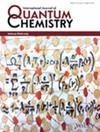Ab Initio Optimized All-Atom Force Field for Vapor–Liquid Equilibria Simulation of Trifluoromethanesulfonyl Fluoride
Abstract
Trifluoromethanesulfonyl fluoride (CF3SO2F) has attracted great interest as a promising replacement gas for sulfur hexafluoride in view of its excellent dielectric performance. The electronic structures of CF3SO2F and a total of seven dimeric complexes have been characterized theoretically using the M06-2X density functionals with the basis set up to 5-ζ (aug-cc-pV5Z + d) and Grimme's D3 dispersion corrections, the coupled-cluster with single, double, and non-iterative triple energies extrapolated to the complete basis set limit, and the symmetry-adapted perturbation theory (SAPT). The dimeric binding energies are in the range of 1–3 kcal mol−1, depending strongly on the relative orientations of the monomers. The dominant dimerization occurs via the concerted interactions between CF3 and SO2 groups. A classical all-atom force field has been developed successfully for CF3SO2F on the basis of the SAPT-calculated decomposition asymptotes of the dimeric complexes. The vapor–liquid coexistence equilibria have been predicted using the hybrid Gibbs ensemble Monte Carlo algorithm. Theoretical vapor pressures and boiling point of CF3SO2F are in good agreement with the latest experimental data. In comparison with perfluoronitrile, CF3SO2F is superior in terms of liquefaction temperature but inferior in both viscosity and thermal conductivity. The present work sheds new light on the use of CF3SO2F as a promising alternative to dielectric and refrigerant fluids.


 求助内容:
求助内容: 应助结果提醒方式:
应助结果提醒方式:


